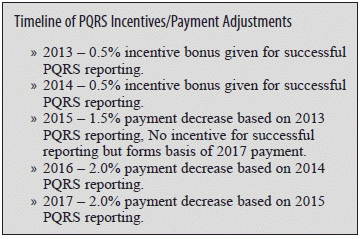
Strike off measure 317 from your PQRS reporting list.
CMS released new updates to the existing PQRS measures in November 2014, with changes set to become effective Jan. 1, 2015. Here is a sneak peek at what chiropractors should expect in the PQRS reporting measures in the new year.
Important: In previous issues, we learned about the three measures that the chiropractics have to report. (See Chiropractic Coding & Compliance Alert, Vol. 1, No. 1, 2 and 3 for instructions on PQRS reporting of pain assessment, functional assessment and blood pressure measures.)
From that list, blood pressure is no longer required by chiropractors for PQRS in 2015. However, chiropractors are still required to take BP on 80 percent of patients age 3 and older for Meaningful Use criteria. “It helps to show the healthcare community that chiropractors treat the whole person, not just the musculoskeletal issues,” reflects Doreen Boivin, CPC, CCA, with Chiro Practice, Inc., in Saco, Maine.
The PQRS measures require collection of data to calculate a percentage or numerator/denominator ratio that needs to meet a required threshold value. Here, the numerator describes the specific requisite clinical action, or a G code for example for that measure, and the denominator describes the number of eligible cases for a measure.
You’ll still report the other two measures for PQRS in 2015. Although there are no incentives for reporting in 2015, reporting is a prerequisite if you do not want any negative payment adjustments in 2017. The measures stand revised as follows:

Editor’s Note: Look for a detailed update on measure revisions in upcoming issues.
